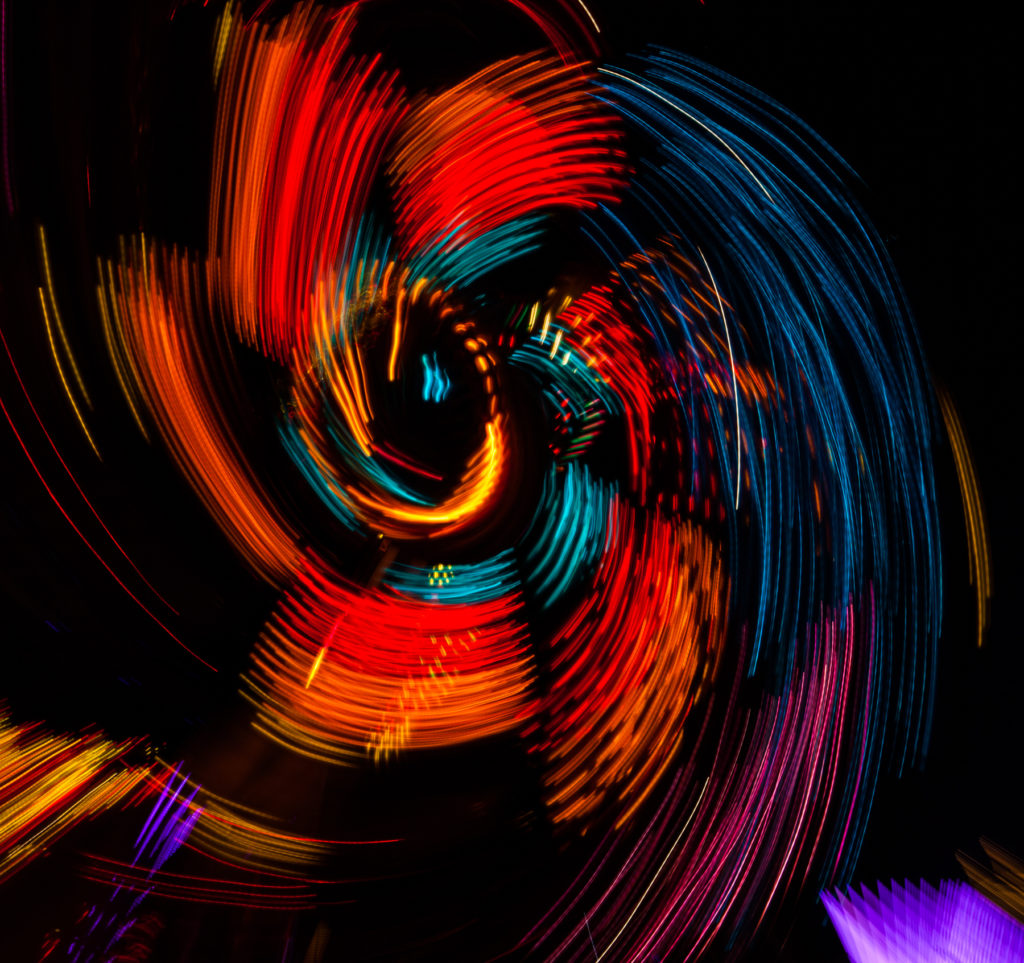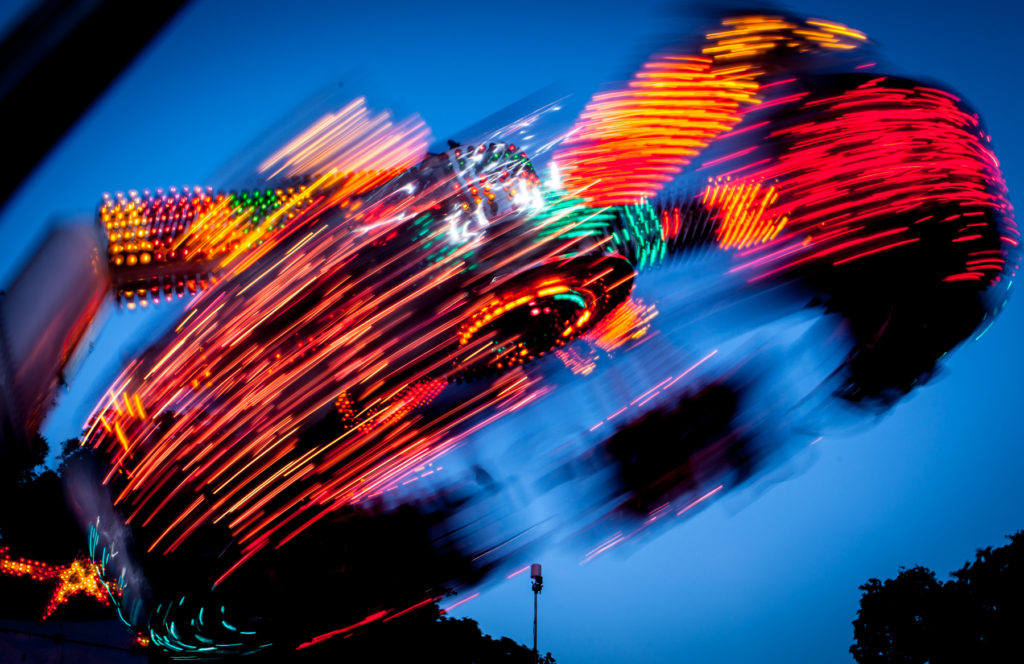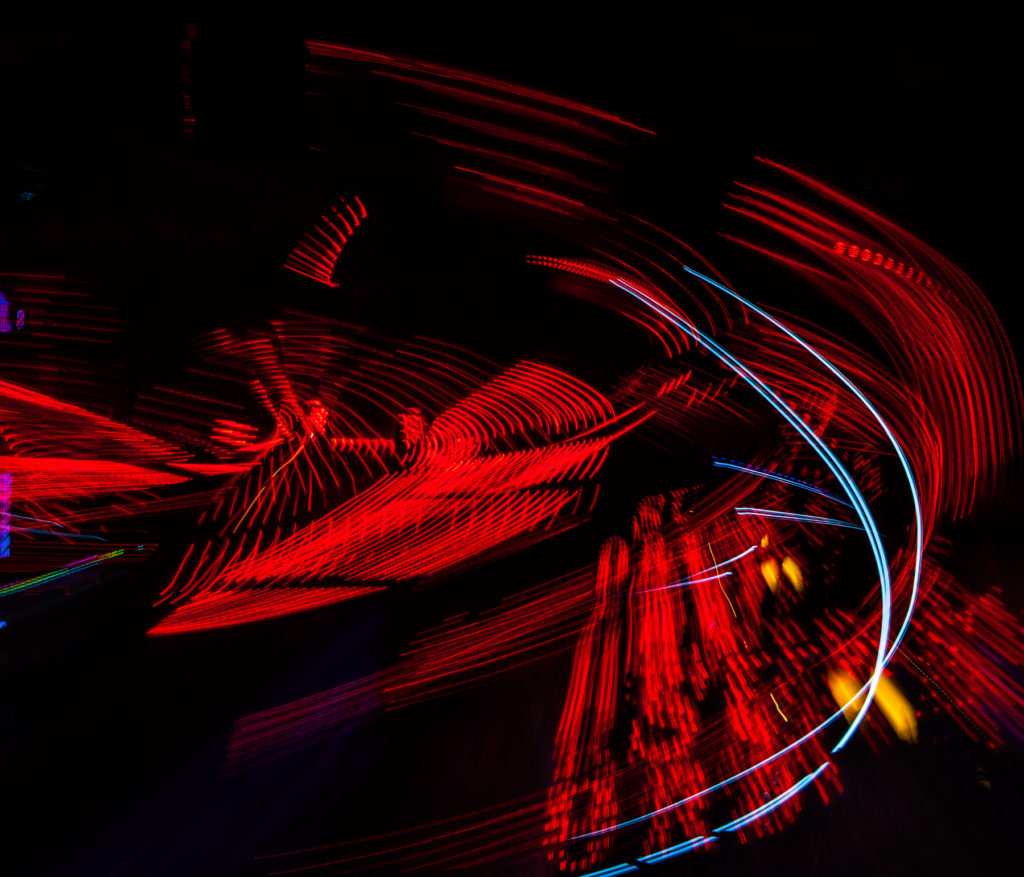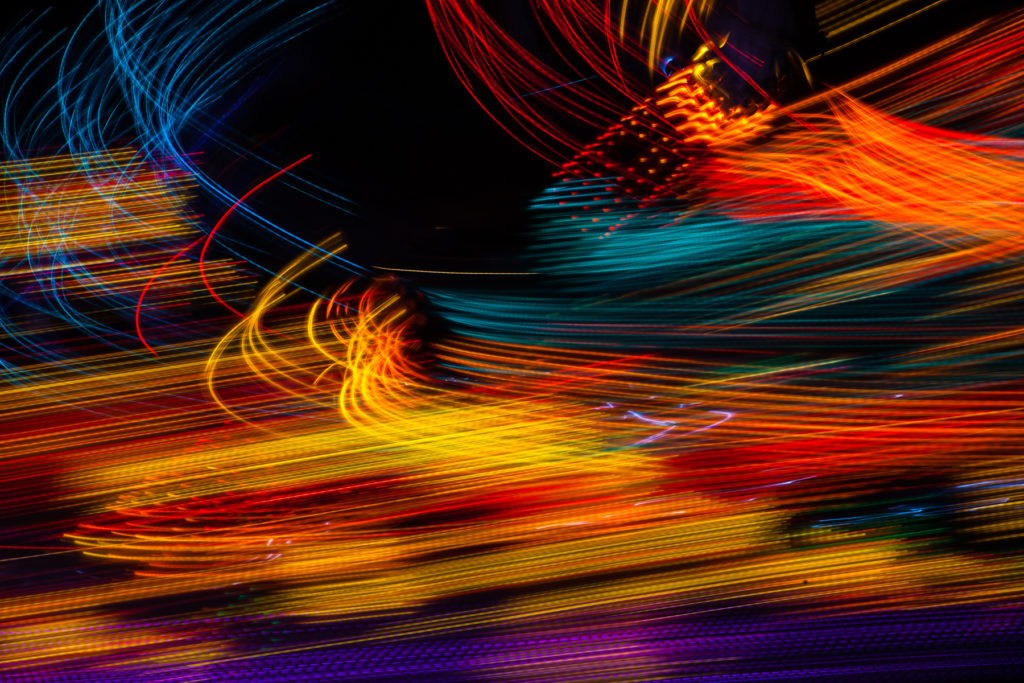As creatives, images have a habit of sticking in our brains. There can be lots of different reasons….. How’d they do that? What is that? Where is that? Sometimes, these images can serve as inspiration for something we decide to do later. This is a story about that.
Flashback to the early 80’s when I was attending Grand Rapids Junior College. The photo department sponsored a photo contest and as students, we were to help with the intake of the contest photos and the judging. We weren’t judging them ourselves, but we helped move the framed images around the department (there were hundreds) as the two judges paired all of the entries down to what would actually be in the show (this was a juried show, so not all entries would make it).
One of the entries was a time exposure of a merry-go-round at a local carnival. Shot on a tripod, the lights of the ride burned into the film to produce a semi circle of light as figures moved and became blurry at it’s base. It was the first time I had scene something like this photographed, and the basics of the image have stuck with me.
The Portland Rose Festival took place last week, and included a carnival along the Willamette River downtown. I thought it would be a great place to try and make some interesting images using the carnival rides to light paint, so I loaded up my camera and tripod and bicycled down to the waterfront.
I started with some static photos using the tripod and a wide angle lens. They looked pretty good, but were very similar to what I had seen decades ago in that contest. I really wanted the light to become the subject, and was hoping to make the light conceptual enough that it might not be recognizable. As I stood and watched the rides, I started moving closer and liked what I was starting to “see”. I use quotes around that word because one of my favorite things about photography is it’s ability to show you things that they human eye cannot see, by utilizing extremely fast shutter speeds to freeze action that is too fast for the human eye to see, or using long shutter speeds to allow movement to blend into shapes.
Moving to a longer lens allowed me to eliminate distracting backgrounds, and really started to allow the light to become the subject. I also brought in the legs on my tripod and used it as a monopod, allowing me to move it through the one second exposures I was using. After a few of these, I also started adjusting the zoom on my lens, adding yet another layer of movement into the image.
In the end, the lights on the ride were moving, the camera was moving, and the lens was zooming, allowing me to combine three types of movement into the one image.
Below are a few others of my favorites…..
Thanx for listening.




